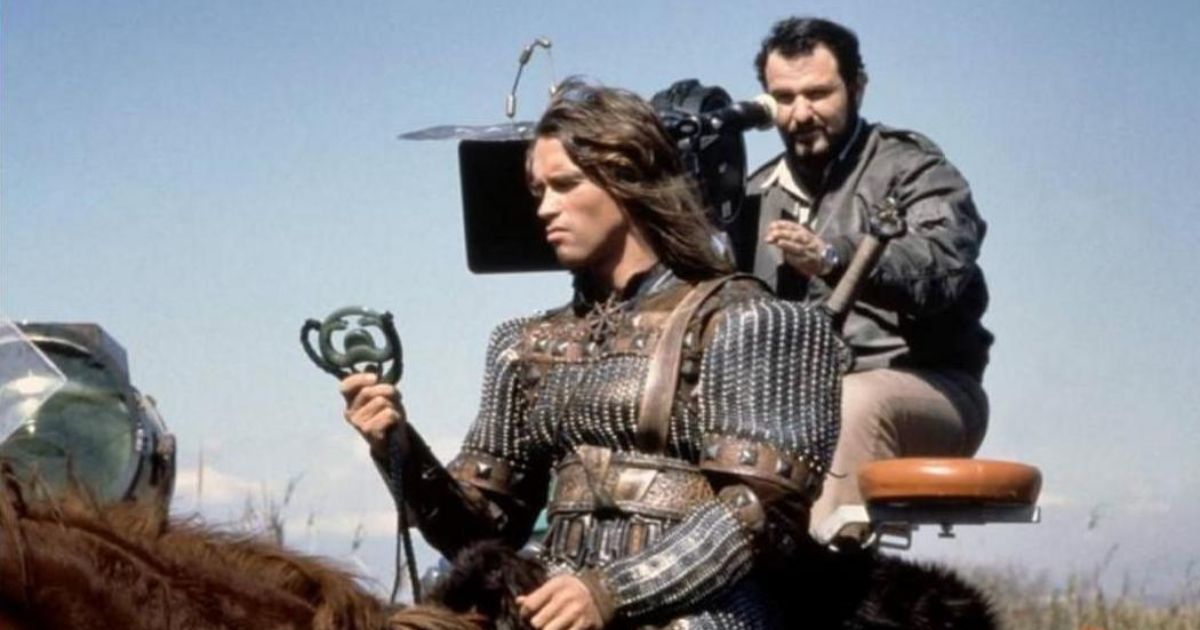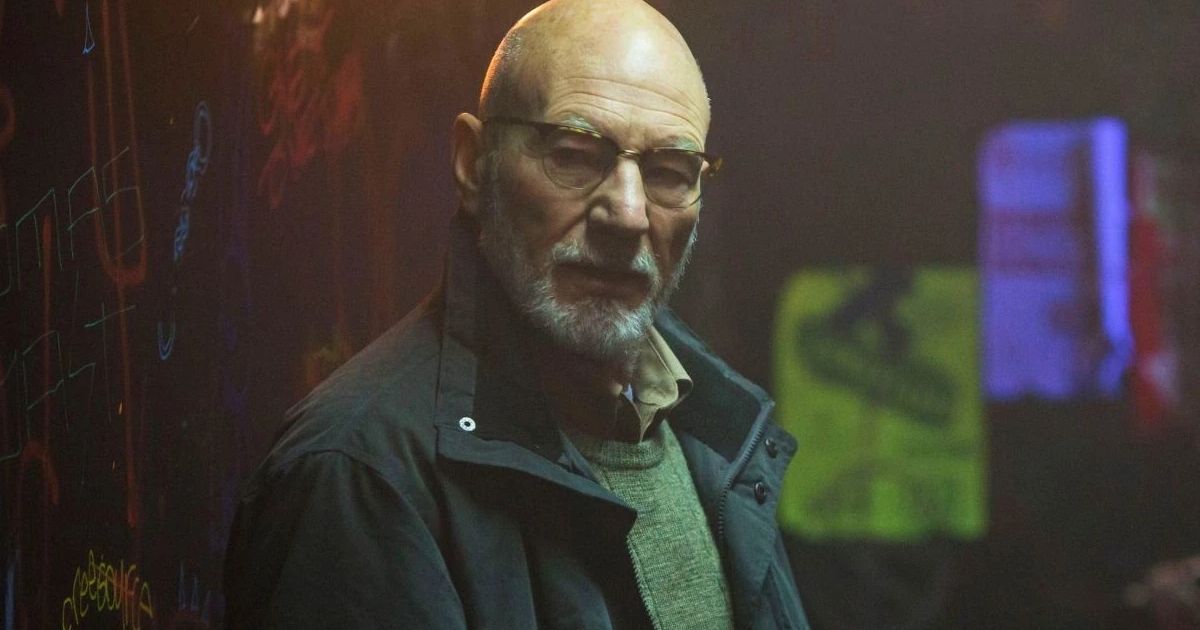The headlines that greeted Robert Eggers’ Viking epic The Northman (2022) sang a familiar, sad song of another auteur’s vision underperforming at the box office. It is a shame so few came to see the film in theaters because it truly is an exhilarating cinematic experience. Featuring sweaty, long-haired dudes barking like dogs at the audience for two hours straight, The Northman is easily the closest Hollywood has ever come to capturing the feeling of attending a heavy metal concert. Despite its disappointing box office, Forbes reported the film had washed its face with streaming sales. Still, its successful release on streaming and home video is evidence that The Northman is on a fast track to becoming a cult classic.
One of the criticisms lobbed at Eggers’ film was that it was far too violent and barbaric to attract a wide audience. And make no mistake, The Northman will be remembered as one of the most expensive movies Hollywood has ever produced featuring scenes with successful actors like Ethan Hawke crawling around and barking like an animal. Why is The Northman is so barbaric and violent?
The Northman Is Historically Accurate
There are two reasons why The Northman is so violent. The first, and perhaps the most obvious reason, is the filmmaker’s commitment to historical accuracy. As he did with the history and folklore of New England in The Witch (2015) and The Lighthouse (2019), Eggers made painstaking efforts to ensure that The Northman would be a faithful representation of Scandinavian culture during the height of the Viking Age, specifically at the turn of the 10th century when the film is set. No filmmaker attempting to portray the Vikings with any degree of accuracy could resist bringing an audience along for one of their infamous, violent raids — something which Eggers achieved in a glorious and barbaric one-shot in the first act of The Northman. A better question, then, might be why is it that the Vikings are so infamous for their violence that they continue to capture the imagination of filmmakers like Eggers well into the 21st century?
An obvious answer to this question is Norse mythology. The Vikings’ religious beliefs and traditions romanticized the act of dying in battle, as Eggers portrays perfectly in the berserker scene leading up to his Viking raid one-shot. If a religion promotes violence as honorable is it any wonder when its practitioners indulge in violent acts? After all, how many other religions exist that believe there will be even more war in the afterlife — and that this is a good thing? Still, there are plenty of other warrior cultures throughout world history that have not stood the test of time like the Scandinavians. What draws filmmakers like Eggers specifically to the Vikings?
Historians like Gwyn Jones attribute the Vikings’ infamous violence to unsustainable environmental conditions, specifically climate change (although it was actually a global cooling at the time) that made the already harsh landscape of Scandinavia nearly inhospitable. The region is so far from the equator that it failed to produce agricultural surplus due to low sunlight, dense forests, cold climate, rocky soil, etc. In his 1968 book A History of The Vikings, Jones wrote a line that could easily have been added as a title at the beginning of The Northman: “Scandinavia could never be the nursery of weaklings.”
Economic desperation is the “why.” But how were the Vikings able to carry out their violent raids? Though they are not typically remembered for their technological innovations, the Viking longships were the most advanced seafaring vessels of their time, enabling the Vikings to strike unsuspecting coastal and riverside towns quickly like a drive-by shooting in modern American suburbs. Historical accuracy aside, there is another reason why The Northman is so violent.
The Northman Is Influenced By Conan the Barbarian
Eggers wears his cinematic influences on his sleeve. The filmmaker has admitted he is embarrassed by how much The Witch borrows from Stanley Kubrick’s heavy-handed use of steadicam for The Shining (1980) and The Lighthouse reeks of the filmography of Ingmar Bergman with its black-and-white close-ups in a piercingly square-like aspect ratio and its cold and desolate island setting. In fact, the surrealist aesthetic of The Lighthouse feel like a cross between an episode of Spongebob SquarePants and Bergman’s Persona (1966).
But when it came time to film The Northman, Eggers’ inspiration came from a far less respected filmmaker than the likes of Kubrick and Bergman: John Milius. Best known for writing the Oscar-nominated screenplay Apocalypse Now (1979) for fellow movie brat Francis Ford Coppola, Milius has long been branded as one of Hollywood’s most outspoken conservatives with a deep and abiding love of guns and a penchant for making inflammatory statements not unlike the ones made by the characters which he helped popularize like Clint Eastwood’s iconic Dirty Harry (1971). Since the film made an impression on him in his childhood Eggers cited Milius’ Conan the Barbarian (1982) as the primary influence on The Northman.
Conan the Barbarian is best known as the film which turned Arnold Schwarzenegger from an obscure body-building champion to a Hollywood movie star. But something that is often forgotten about Conan the Barbarian (among the many things which are forgotten about the film due to its episodic plot and dreamlike score by Basil Poledouris) is that the film is incredibly violent. There’s the slaughtering of young Conan’s family at the beginning of the film, the beheading of James Earl Jones’ central antagonist Thulsa Doom in the last act, and who could forget the scene halfway through the film wherein Schwarzenegger’s protagonist Conan punches a camel, seemingly for no reason at all.
Is The Northman Doomed to Be Appropriated?
Eggers made something of a pivot into Scandinavian history after primarily being interested in New England folklore from witches in The Witch to mermaids in The Lighthouse. Speaking to The Daily Beast in 2022, Eggers said the following.
I was not interested in Vikings and the macho stereotype, and the rightwing Nazi misappropriation of Viking culture cemented my disinterest as an adult.
Apparently, a trip to Iceland was all it took for Eggers to change his mind. But is The Northman doomed to be appropriated by the very people that made him steer clear of Vikings before he changed his mind? Eggers’ film is such a visceral rock concert experience that, perhaps through no fault of its own, falls perfectly into the hands of neo-Nazis who already organize at these kinds of shows like the fictional but realistic concert featured in the main set piece of Jeremy Saulnier’s 2015 film Green Room.
This story originally appeared on Movieweb



